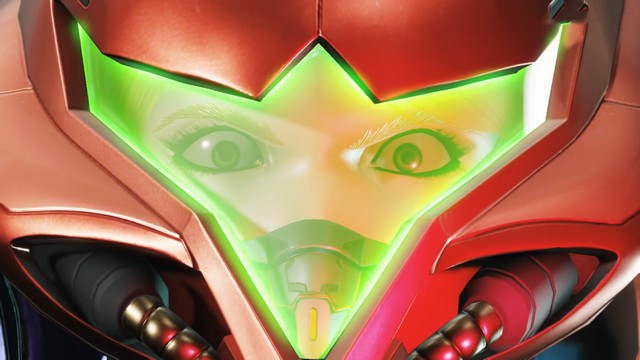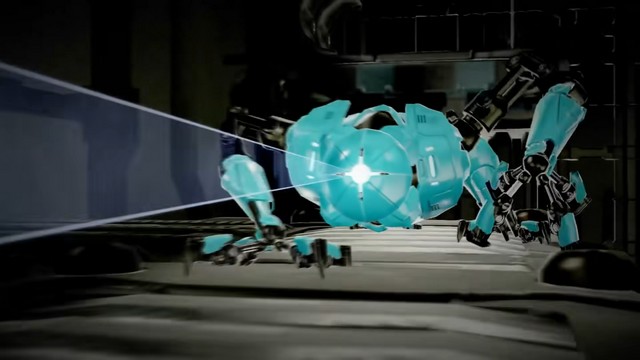It’s hard to believe Metroid Dread is the first original 2D game in the series since Metroid Fusion was released in 2002. Appropriately, Dread picks up where Fusion left off both in story and in gameplay. Longtime fans of the series will be immediately gripped with a feeling of familiarity as Samus explores the mysterious planet ZDR.
Given its popularity, it feels like there should be more Metroid games. After all, it helped to spawn a genre and is one of Nintendo’s most beloved properties. However, the series just doesn’t get many chances to shine. With Metroid Prime 4 in development hell, Dread has a heavy weight on its shoulders to prove the series is still viable.
X marks the spot
Metroid Dread starts shortly after the ending of Metroid Fusion. The Galactic Federation receives data that an X parasite survived Samus’s encounter with them on the distant planet of ZDR. In response, the Federation sends seven EMMI robots to investigate. These robots are almost indestructible, but the Federation nevertheless loses contact with them.
The Federation’s next step is to send in Samus Aran. Since she has Metroid DNA interwoven into her own, she is the only known human to be immune to the X parasite. Unfortunately, when Samus arrives at ZDR, a Chozo warrior attacks her and sends her tumbling into the planet’s underground. She is far away from her ship when she awakes, retains none of her equipment, and finds her suit has been transformed.
Very quickly, Samus also discovers that an unknown force has subverted the seven EMMI units. She’ll have to contend with these seemingly invulnerable robots as she attempts to find the X parasite, discover the secrets of ZDR, and make it back to the surface.
Metroid Dread takes a more classic approach to its storytelling. Unlike Metroid: Other M, which was criticized for its abundance of cutscenes, Dread uses them sparingly. Metroid has always been about exploration and excellent visual design, and it’s great that Nintendo and MercurySteam didn’t feel the need to pack it with endless lore. It does have more storytelling than some previous 2D entries, but it balances it well by keeping the game’s mysteries intact throughout.
Unfortunately, those new to the series will be lacking some context. Given that Metroid Dread is the sequel to a 19-year-old game, it’s unfortunate that Metroid Fusion isn’t available on the Switch. Dread just doesn’t hit as hard without facing down SA-X and seeing why the X parasite is so feared. While you can play the original Metroid and Super Metroid on Nintendo Switch Online, it would have been nice to either make Metroid Fusion available on the Switch in some form.
The return of the king
With Metroid Dread, MercurySteam and Nintendo went back to the series’ roots. This isn’t a first-person, 3D affair like Metroid Prime, or whatever Other M was; it’s a 2D platformer. Ironically, this was one of the biggest risks the devs could take. Despite the franchise being the namesake of the Metroidvania sub-genre, there’s been much competition in recent years. Fortunately, Metroid Dread holds tight to what players loved about past entries while giving consideration to modern design.
Like the other Metroid games before it, Dread puts Samus in a hostile area and she must make her way to safety. In the beginning, she has the ability to jump, shoot her arm cannon, and launch small missiles. Traversal is tough, and many areas lie out of the player’s reach. However, this is the magic of how Metroid Dread (and other games of the genre) work.
You’ll spend the first hour or so bouncing off obstacles, frustrated at Samus’s lack of power. However, this is the game’s way of funneling you toward your goal. As time goes on, Samus gains gear back, and suddenly that ledge that was too high is well within your grasp, or that mysterious door can be opened. Your path through the game sublimely weaves throughout the levels, and there’s a steady drip of dopamine as Samus becomes more powerful over the course of the game.
One of the failings of Metroidvanias is that when you accrue enough gear and abilities, that feeling of danger as you explore lessens. However, Metroid Dread avoids that with the addition of EMMI robots. In each of the game’s areas, there is an EMMI Zone. Inside this zone, a robot called an EMMI prowls around. These machines can’t be killed with Samus’s normal weapons and will chase you throughout the EMMI Zone if you’re detected. This means even at her strongest, Samus must retreat and hide because getting caught by an EMMI is an instant game over.
The constant cycle of exploration and overcoming obstacles keep Metroid Dread engaging from start to finish. It’s a lean experience at 8-10 hours, but there is some post-game content to give players a reason to give it multiple playthroughs. Those that are looking for more playtime from a $60 game should note that I enjoyed my 10 hours with Metroid Dread a lot more than I have some recent titles that gave 30-50 hours for the same price.
Smooth moves
The control scheme is one of the areas where Metroid Dread is vastly improved over previous games. Instead of constantly entering the menu and switching between equipment, it’s all mapped to the controller. So, holding L puts the player in aim mode, L+R arms the missiles, L+R+ZL lets you aim the grapple beam, and so on. It might seem like a small issue, but not having to go into menus to equip gear really ups the immersion.
Upgrades also work a bit differently. When Samus gets an upgrade to her arm cannon or missile, it becomes permanent. For example, the missile gets upgraded into the super missile instead of there being two ammo pools. This simplifies things considerably and helps to make the whole gameplay experience more fluid.
Screw attack
The game itself is a masterpiece. The environmental design is excellent, with each area having its own aesthetic, enemy types, and doodads. Samus’s new suit also has an interesting design, with sinewey muscle-looking material sections that give it a more organic look. Unfortunately, the Switch hardware is the biggest detriment to Metroid Dread.
To its credit, the Switch runs Metroid Dread fairly well. However, it’s not a graphically intensive game, and there were multiple times during my playthrough where there was stuttering and slowdown. It didn’t cause any major issues, but I would love to see Dread on a platform where it could enjoy a higher framerate and resolution.
I’ve been critical of the Switch’s power since the console launched, but it’s becoming increasingly apparent that the hardware is holding the games back.
Metroid Dread Review: The final verdict
Metroid Dread is an excellent comeback for the series. For a while, it was looking like Nintendo was content to let the franchise stay dormant, and I’m ecstatic that it’s back. MercurySteam did a great job of capturing what makes Metroid such a fantastic title.
So far, Metroid Dread is a serious contender for my personal game of the year. It takes all the things that I loved about previous entries and streamlines them into a much more playable game. It’s the most accessible Metroid title to date, and it’s sure to win many new fans for Nintendo.
-
Most accessible Metroid to date.
-
Environmental design is excellent
-
Well-balanced storytelling.
-
Vastly improved control scheme.
-
Great new upgrades.
-
Performance can be spotty.











